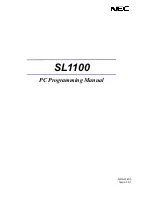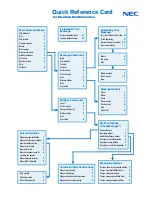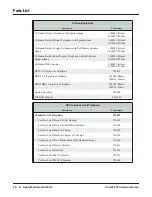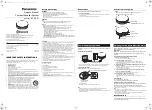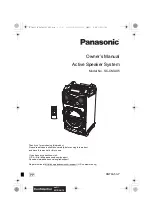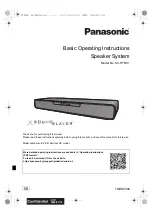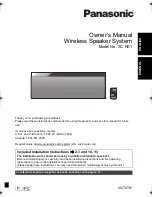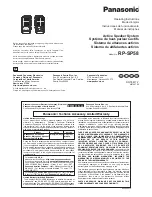
E T H E R N E T N E T W O R K S & S W I T C H E S
page 3 – 2
WheatNet-IP
/ Apr 2009
Ethernet Networks and Switches
Overview
The underlying network plays a major role in the successful deployment of your
WheatNet-IP system. In the IP audio world, the Ethernet network is the analog of
the punch block wall in a traditional broadcast plant. As such, careful consideration
should be given to network topology when planning the installation. Because the
size and type of network you design and deploy directly depends on the amount of
WheatNet-IP and surface hardware you are installing, it is wise to build a network
that has reasonable overhead and room to grow as formats and audio distribution
needs change over time.
Gigabit Ethernet Technology
The WheatNet-IP system uses 1000BASE-T gigabit Ethernet technology
exclusively to transport audio and control packets between BLADEs. Because the
WheatNet-IP system uses gigabit connectivity, the possibility of link overload is
drastically reduced when compared to competing 100BASE-TX systems. Each
Gigabit connection is capable of handling literally hundreds of audio streams, along
with associated GPIO, system configuration, and network monitoring capabilities.
Advantageously, the cost of gigabit technology is rapidly decreasing due to
economy of scale benefits gained by cross application use of the technology.
Choosing Ethernet Switches
There are literally hundreds of choices of Ethernet switches on the market today.
Chances are you have a compatible switch in your facility already. However it is
recommended that the WheatNet-IP network be isolated from any existing network
using separate switches or a unique VLAN on existing switches.
The primary design concern you face is whether to use managed or unmanaged
switches, and the amount of Ethernet audio hardware you deploy ultimately drives
this decision. Further reasons for selecting one over the other are described in detail
after the basic feature considerations listed below.
Switch Feature Considerations
• 10/100/1000 Ports - When looking at switches, make sure all the ports support
full-duplex 1000BASE-T connections. Some switch models are touted as
Gigabit, but really only have one or two 1000BASE-T ports.
• Hubs - Packets entering a hub or repeater are broadcast out of every other port
on the device. Gigabit hubs must be avoided because they are a single collision
domain and can slow your GbE audio network to a crawl. If you find a really
good deal on a Gigabit “switch” be sure it is not really a hub.
• Throughput - Is an important specification when deciding on a Gigabit switch.
Throughput is the amount of cumulative data traffic a switch is capable of
transceiving. Ideally an eight port 1000BASE-T switch should incorporate an
8Gbps non-blocking switch fabric. Low throughput switches typically use
input buffering techniques susceptible to Head-Of-Line blocking which can

































